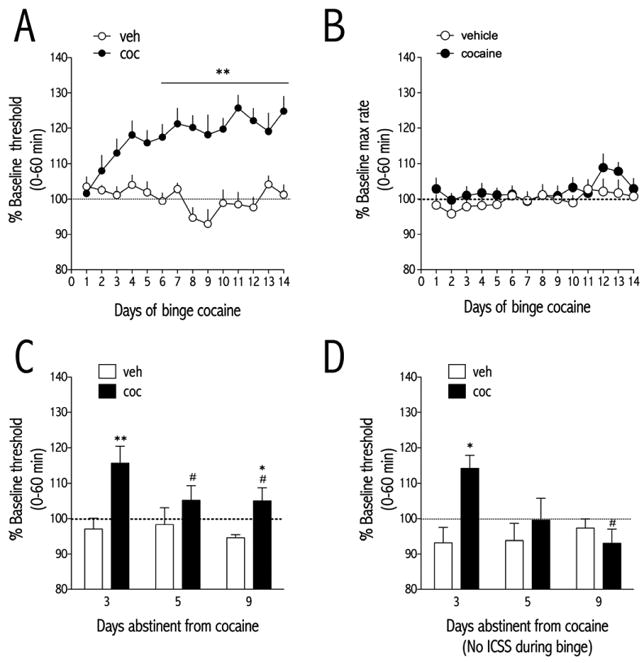Figure 1.

Cocaine administered in a binge pattern (Spangler et al., 1993) elevates ICSS thresholds. (A) Effect of vehicle (Veh; saline) or cocaine (Coc; 3×15 mg/kg/d, IP) on ICSS thresholds (Veh, n=7; Coc, n=9) measured 21-hr after the end of each daily binge. Data are expressed as a percent of pre-binge baseline thresholds (±SEM) during 60-min tests. Treatment with cocaine for 6 - 14 days causes significant elevations in ICSS thresholds during daily withdrawal. (B) Binge pattern cocaine does not affect maximum rates of responding for ICSS. Data are expressed as a percent of pre-binge baseline maximum rates of responding during 60-min tests. (C) ICSS thresholds were significantly elevated in rats treated with binge cocaine compared to rats treated with vehicle on days 3 and 9 of abstinence from binge cocaine. (D) Rats treated with an identical 14-day regimen of binge pattern cocaine, but without daily ICSS exposure, showed a similar increase in ICSS thresholds after cessation of cocaine administration. ICSS thresholds were significantly elevated in rats treated with binge cocaine compared to rats treated with vehicle on day 3 of abstinence from binge cocaine. For A and B, data were collected 21-hr after the last cocaine treatment of each day (and 1 hr before the time of the first injection of the day). For C and D, data were collected at the same time each day. *P<0.05, **P<0.01 compared to vehicle-treated rats at the same time point; #P<0.05, ##P<0.01 compared to abstinence day 3 of corresponding treatment. Bonferroni (Dunn's) posthoc tests.
